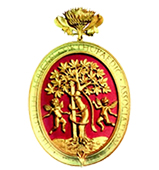What to Do About Blisters From Athlete's Foot
Athlete's foot is a contagious fungal infection that affects the skin on the feet and between the toes. It can cause fluid-filled blisters on the feet, as well as other symptoms.
Light exercise can yield significant cognitive benefits, new research shows
Everyday physical activity, like going for a short walk or playing with the kids, may provide short-term benefits for cognitive health, equivalent to reversing four years of cognitive aging.
Self-inflicted partial epiphyseolysis of the distal femur a case report
Injuries to the epiphyseal plate are of great concern as they can affect bone growth. Although epiphyseal fractures are common in adolescents, fractures of the distal femoral epiphyseal plate are rare.
7 hand exercises for carpal tunnel syndrome with pictures
Certain hand exercises can help relieve pressure on the median nerve and alleviate symptoms of carpal tunnel syndrome. Exercises include stretches, wrist extensions, hand squeezing, and more.
Foot Anatomy and Causes of Pain
The foot is a complex structure made up of 28 bones, 33 joints, 19 muscles, over 100 tendons and ligaments, and more than 200,000 different nerve endings. These work together to allow you to walk, run, maintain balance, absorb impact, and bear upper body weight.
-
Sandton
MediclinicDr SD Smith
Suite 16, First Floor, Main building
Main Rd & Peter Place
Bryanston
Sandton, GA 2021Tel:
-
Netcare Waterfall
City HospitalDr A Naidoo
Room 301, Waterfall Sports Centre
Exam Room 5. South Block
Magwa Cres & Mac Mac Avenue
Vorna Valley
Midrand, GA 1682Tel:
-
Intercare Sandton Day/
Subacute HospitalDr SD Smith
Day cases can be offered
Consultations at Sandton Mediclinic
200 Rivonia Rd
Morningside
Sandton, GA 2196Tel:
-
Brits Mediclinic
Consultation Block,
1st floor, Room 103
8 Kerk Street
Brits, 0250sTel :












